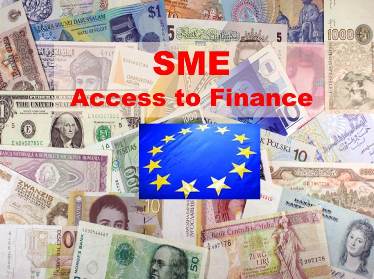 EU Publishes “Survey on the Access to Finance of Enterprises” (SAFE). The Survey was published on: 30/11/2016
EU Publishes “Survey on the Access to Finance of Enterprises” (SAFE). The Survey was published on: 30/11/2016
Key Findings: Small businesses from the EU are increasingly confident about their access to finance, according to a joint survey published today by the European Commission and the European Central Bank.
Access to finance is the least pressing problem in general and businesses’ demands for financing were often fulfilled. However, financing might still be a barrier for smaller and younger companies or in specific countries.
Bank loans and credit lines remain the most relevant sources of financing for SMEs in the EU. 55% of SMEs used credit lines in the past or considered using them in the future, while 50% said that about bank loans and 47% about leasing. Equity financing is relevant for 13% of SMEs.
Access to finance in general is not the main challenge for enterprises. In 2016 it’s only a problem for 9%, compared to 16% in 2009 and 10% in 2015. The top 3 most important problems the SMEs are facing are:
- finding customers (for 25% of them)
- availability of skilled staff or experienced managers (20%)
- competition (13%)
However, in Greece and Cyprus, almost 1 out of 4 SMEs (24%) report major issues with financing.
27% of the EU SMEs actually applied for a bank loan in 2016, while only 6% of them did not apply because of fear of rejection. Out of those that did apply, 7% of SMEs’ bank loan applications were rejected and only 2% declined the loan offer from the bank because they found the cost unacceptable. Some of the applications were still pending at the time of the survey. It means that in total 79% of SMEs managed to get the full or part of the requested bank loan.
In fact, the EU SMEs are reporting fewer loan requests being turned down in general. The rejection rate went down from 15% in 2009 to 8% in 2015 and 7% in the current year. However, bank loan applications from smaller companies are still rejected more often: 12% of micro companies compared to only 1% of large ones.
The financing is mostly used for fixed investments (by 38% of the EU SMEs) and inventory or working capital (34%). Development of new products and hiring or training employees are both reported by 15% of SMEs.
SMEs in the EU also indicated an improvement of the general situation in net terms. There was a net increase in turnover, in the number of employees and a slight net increase in profits. In net terms, they increased investments, fixed assets and inventories and working capital, while the interest expenses decreased. However, the companies are still reporting increases in labour costs and other costs.
More information
- The survey was conducted from 19 September to 1 November 2016. The total EU sample size was 17,354 firms of which 15,668 (90%) had fewer than 250 employees. The study mainly provides evidence on changes in the financial situation, financing needs and access to external financing of SMEs in the EU and compares it with that of large enterprises. The reference period is April to September 2016.
- The full report and descriptive statistics results of the survey can be found on the Commission’s SAFE web page. The corresponding report and data for the euro area can be found on the ECB’s website.
- SME access to finance is supported by the European Fund for Strategic Investments (EFSI), Europe’s programme for small and medium-sized enterprises COSMEand the EU’s research and innovation funding programme Horizon 2020. Businesses can contact selected financial institutions in their country to access EU financing through the access to finance website.
Documents & links: The full report and descriptive statistics results of the survey
Source: EC.Europa.EU/Growth/Tools





















